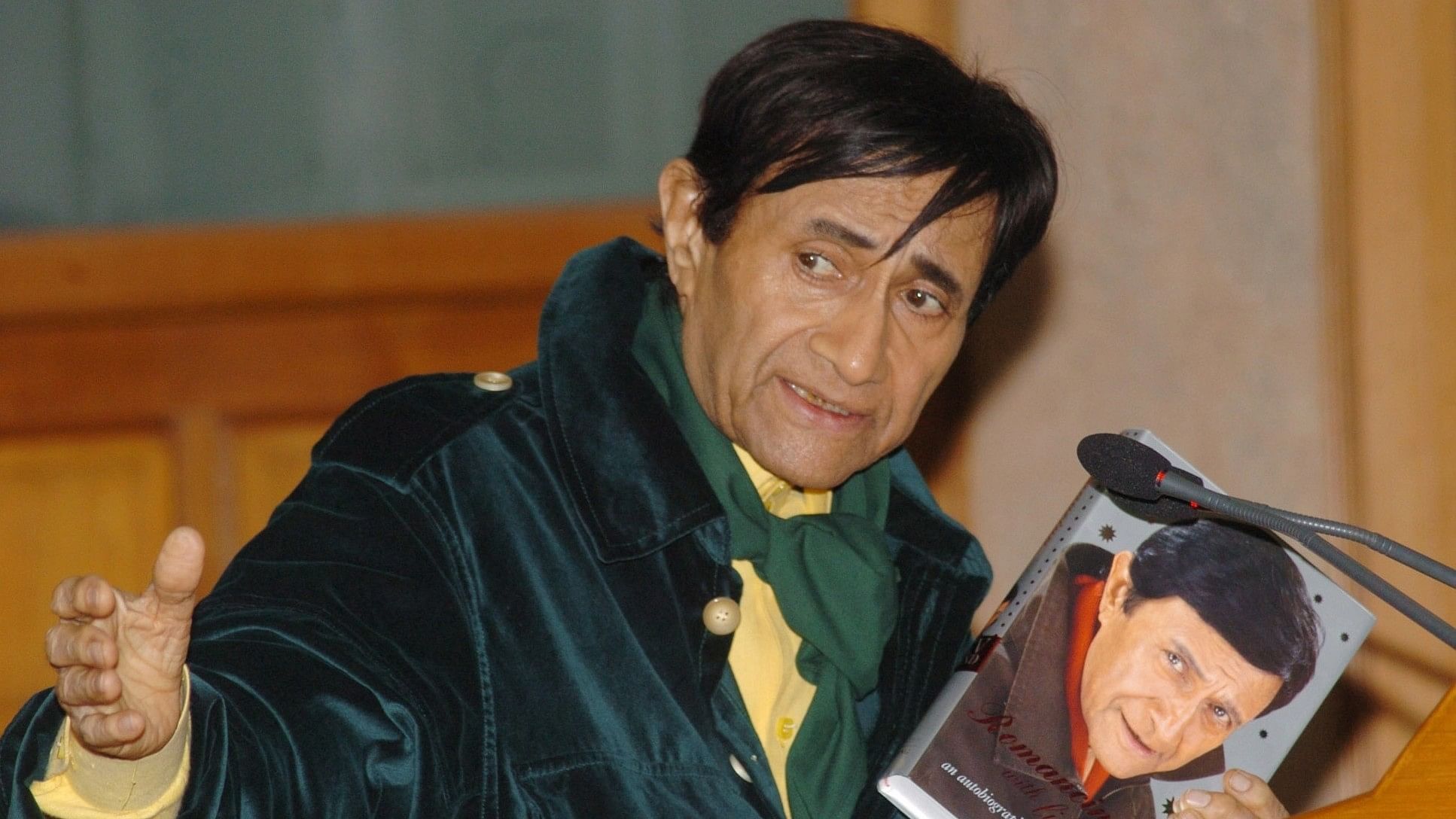
Dev Anand at the release of his autobiography, ‘Romancing with Life’ in 2007.
Credit: Ministry of Information & Broadcasting, GoI
Move with the times is the tagline of Dev Anand’s 2001 film Censor. It’s a bafflingly shoddy feature made in the final decade of Anand’s filmmaking career which by then was a string of unremarkable movies. However, it strongly asserts filmmakers’ right to creative expression against censorship and rejects conservatism. Throughout his life, and especially as a filmmaker, Dev Anand embraced the motto of keeping up. This youthful zest for life and cinema made Anand one of the most adored screen legends of Indian cinema, who also succeeded as a producer, writer, and director. Whether his movies were hits or misses, praised or dissed, mattered or became irrelevant, Dev Anand was cool and disaffected. He chose contemporary subjects to work on and remained a tenacious filmmaker to the very end. Chargesheet, his last venture, got released a few months before his death in 2011.
Anand entered Bombay cinema in the ’40s and found success as a leading man with Bombay Talkies’ Ziddi (1948). Over the next three decades, the actor’s stature as an iconic star was built over his hyper-stylised personality and umpteen hits including classics like CID (1956), Hum Dono (’61), Guide (’65), Jewel Thief (’67) and Johny Mera Naam (1970). Along with Dilip Kumar and Raj Kapoor, Anand ruled Hindi cinema of the ’50s and ’60s. While Kumar stayed focussed on acting, Kapoor was also directing movies under his banner, R K Films.
Anand turned to direction much later but he had launched his banner, Navketan with his filmmaker elder brother Chetan Anand in 1949. Younger brother Vijay Anand aka Goldie joined later and went on to direct their biggest hits including the all-time great, Guide. Other celluloid masters like Guru Dutt, Raj Khosla, too, found a footing at Navketan. Together they ushered a new chapter in Hindi filmmaking called Bombay noir with Dutt’s Baazi (1951), Chetan’s Taxi Driver (’54), and Goldie’s Kala Bazar (1960). A talented pool of character actors, cinematographers (V Ratra, Fali Mistry), lyricists Sahir Ludhianvi and Majrooh Sultanpuri, and music director S D Burman were Navketan regulars and significant to its rise. At the centre was the brand’s biggest star. A suave urban face, a hopeless romantic, a smooth gambler, a charismatic conman, a woman’s man — Dev played them all.
Dev Anand was well-informed, cosmopolitan and often admired for his easy camaraderie with his leading ladies. In films he directed, his ease around women, progressive worldview and global experiences reflected in the stories and characters he portrayed. They opened a window to new cultures, fashion, and people. He launched newcomers. His heroines were modern and assertive. He brought a certain novelty to how locations were treated in mainstream movies. Hare Rama Hare Krishna (1971) captured the esoteric hippie culture in a charming, steeped-in-mythology Kathmandu. Des Pardes (1978) highlighted the plight of illegal immigrants in London. The mighty Himalayas inspired the musical Ishk Ishk Ishk(1974), and our very own Bangalore Mysore highway became the canvas for the love story in Heera Panna (1973).
Music was instrumental to Dev Anand’s stardom. Some of Hindi cinema’s greatest melodies feature him. As a filmmaker, he understood this connection and had musical greats like Kishore Kumar, Lata Mangeshkar, and R D Burman around to fulfil his imagination. The angst and alienation of Hare Rama Hare Krishna’s troubled heroine conveyed through Asha Bhosle’s euphoric voice in Dum maaro dum or Prem Pujari’s (1970) sensitive hero evocatively professing his love in Phoolon ke rang se — much of the philosophy of Anand’s films came alive with their music. Love, peace, music and kinship were familiar themes in Anand’s works which also suffered from stilted storytelling and conflicting messaging. Like Prem Pujari, Anand’s directorial debut about a pacifist soldier, goes from being a fascinating exploration of conventional masculinity and futility of war, to having its hero “man up” and proving valour on the battlefield.
Chetan’s cinema of realism (Neecha Nagar, 1946; Aakhri Khat, ’66) was political and poetic. A leftist writer, he’s best remembered for his starkly affecting war movie Haqeeqat (’64). Goldie, on the other hand, was the genre-hopping genius behind classics like Teesri Manzil (1966), Guide, Jewel Thief and more. Smart shot framing, brilliant buildups, clever editing — there’s a wealth of detail in his craft for which he remains the foremost influence on the majority of Bollywood directors.
Dev Anand’s filmmaking best described is inconsistent with flashes of brilliance. Of the 19 films he directed, only a handful can be termed well-made in entirety. Sometimes his plots would take bizarre turns, scenes would get a slapdash treatment, conversations would turn fabulously loony. And out of the blue, there would be some insightful dialogue, a well-reasoned observation or an enlightened idea to stump you and have you reassess your opinion. This enigma can best be explained that Dev Anand is the man whose unvarying vision made the masterpiece Guide happen. And he is also the one who nonchalantly had a Cindy Crawford poster as his late step-mother in one of his ditzy ’90s films. Either way, a legend!
Dev Anand’s 10 great acting performances
*Baazi (1951)
*Rahi (1953)
*CID (1956)
*Kala Pani (1958)
*Bombai Ka Babu (1960)
*Hum Dono (1961)
*Tere Ghar Ke Samne (1963)
*Guide (1965)
*Jewel Thief (1967)
*Tere Mere Sapne (1971)